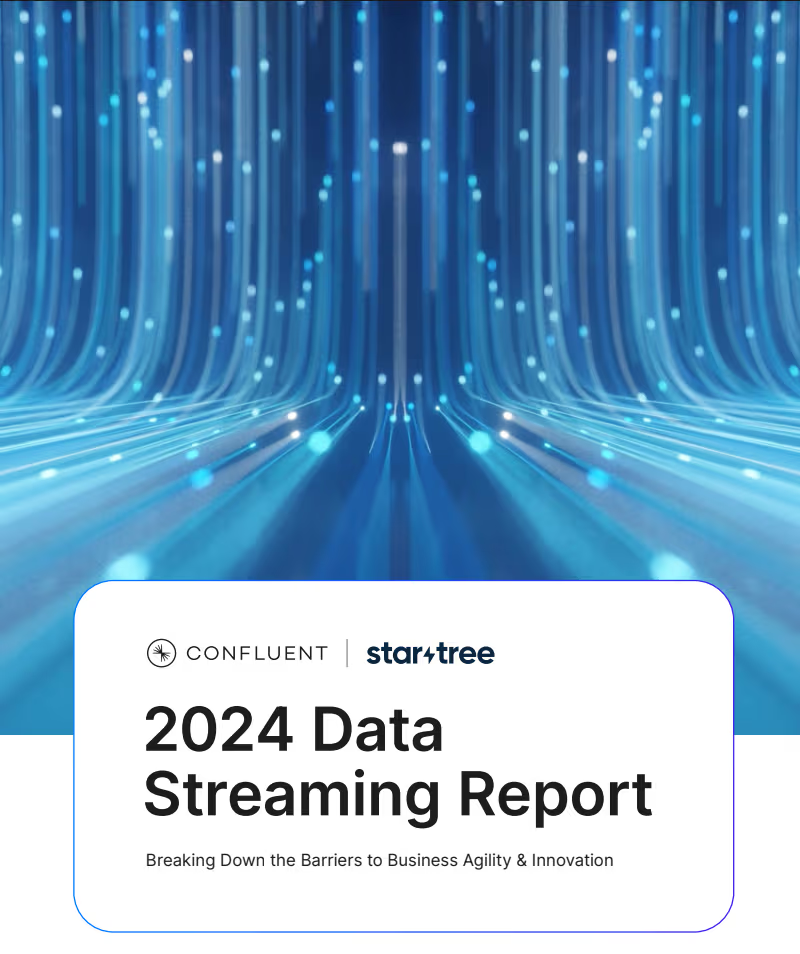Introduction
Fraudulent transactions are a growing threat to e-commerce businesses and can significantly impact their bottom line and reputation. As the e-commerce industry continues to evolve, so do fraud activities. To effectively manage these threats, businesses must stay ahead of the curve with advanced security measures such as anomaly detection.
Anomaly detection software uses sophisticated algorithms to analyze timeseries data related to transactions and identify patterns that deviate from the norm, indicating potential fraudulent activity. In this blog post, we will delve into StarTree ThirdEye, a solution for anomaly detection and metrics monitoring in the context of e-commerce, and explore how it can be used as a powerful tool to detect and prevent fraudulent transactions.
Common Anomalies in E-Commerce
The convenience of online shopping is an increasingly large draw for customers today. This chart shows the growth in the number of shoppers using e-commerce:
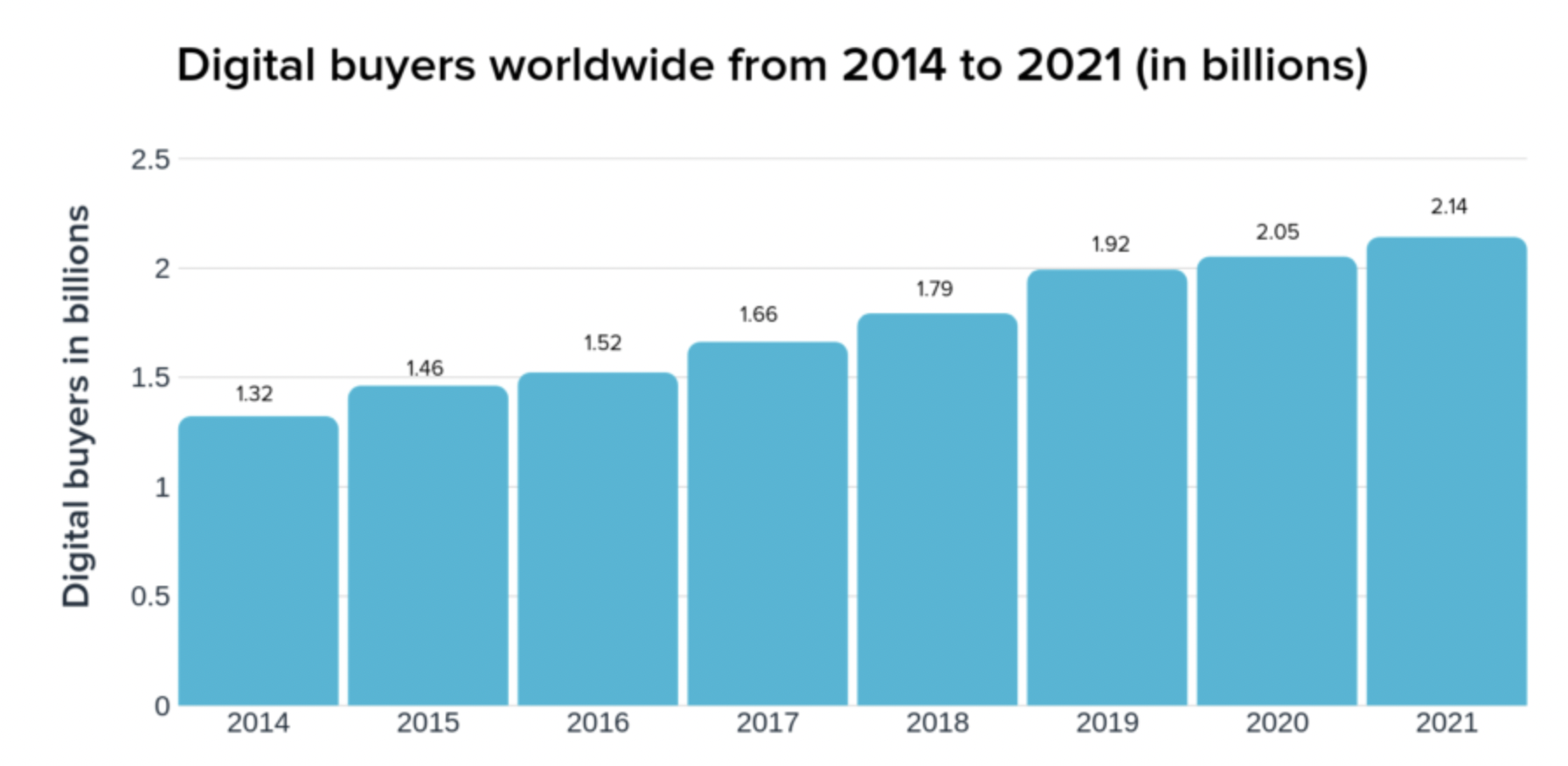
Source: Statista.com
Some common types of anomalies encountered in e-commerce include:
- Fraud : Credit card fraud, account takeover, or other fraudulent activity
- Technical issues : Server outages, database problems, or security breaches
- Changes in customer behavior : Unusual patterns like a sudden increase in abandoned shopping carts or a drop in the average order value
- Changes in market condition s: External factors like changes in the economy or consumer preferences
- Competition : New competitors entering the market change the competitive landscape
Anomaly Detection for Detecting Fraudulent Transactions
Before diving into how anomaly detection can be used to detect fraudulent transactions, it’s essential to understand what timeseries data is. Timeseries data is a sequence of data points collected over a period of time. In the context of e-commerce, this could include data such as the number of transactions per day, the average transaction value, or the number of returns.
Anomaly detection can identify unusual patterns in the data that may indicate fraudulent activity. For example, if there is a sudden increase in the number of transactions from a single customer, this could be a red flag that the transactions are fraudulent. Similarly, if there is a sudden increase in the average transaction value, this could also be an indication of fraudulent activity.
To use anomaly detection in e-commerce, the software must first be trained on normal time-series data. This typically involves collecting a large dataset of normal transactions and using machine learning algorithms to identify patterns in the data.
Once the software is trained, it can monitor new transactions. As the software processes the incoming data, it compares it to the learned normal patterns and flags any data points that fall outside the expected range as potential anomalies. These anomalies are then further analyzed using statistical techniques to confirm whether or not they are truly unusual.
The transaction can be flagged for further review if an anomaly is confirmed, helping businesses to identify and prevent fraudulent transactions before they result in financial losses.
Limitations of Some Anomaly Detection Software
Building Anomaly Detection software is time-consuming and can take years. Some tools are available to address this problem but come with limitations that make them unfit for monitoring fraudulent anomaly detection.
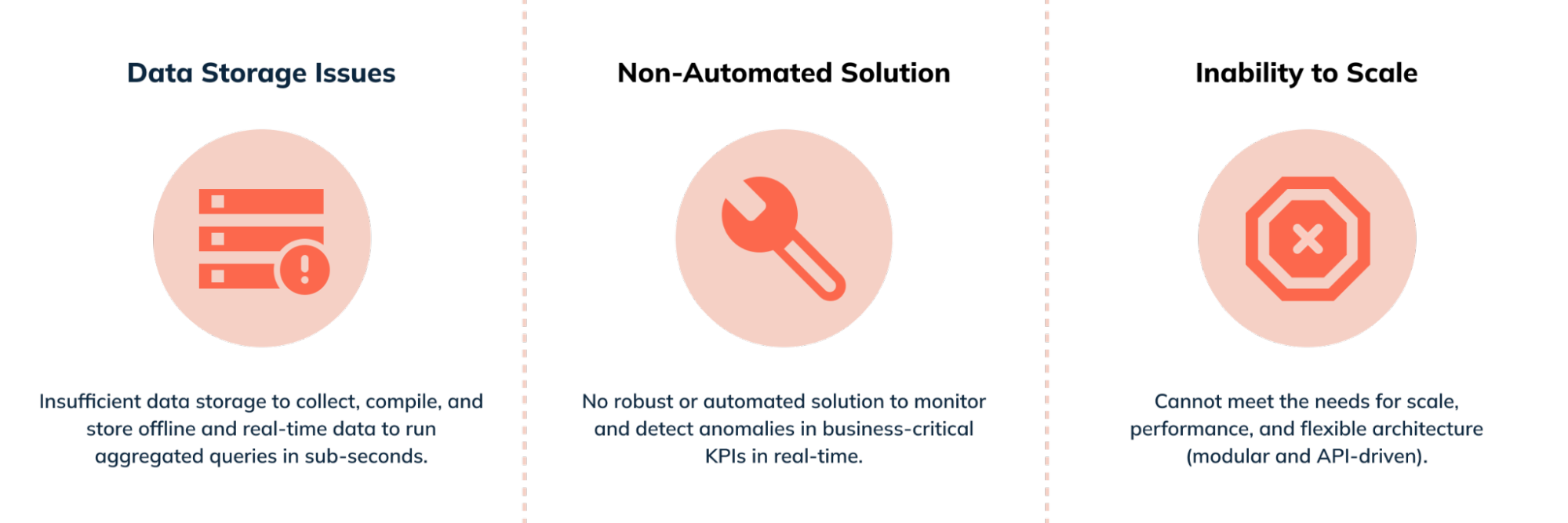
StarTree ThirdEye Automates and Monitors Fraudulent Anomaly Detection at Scale
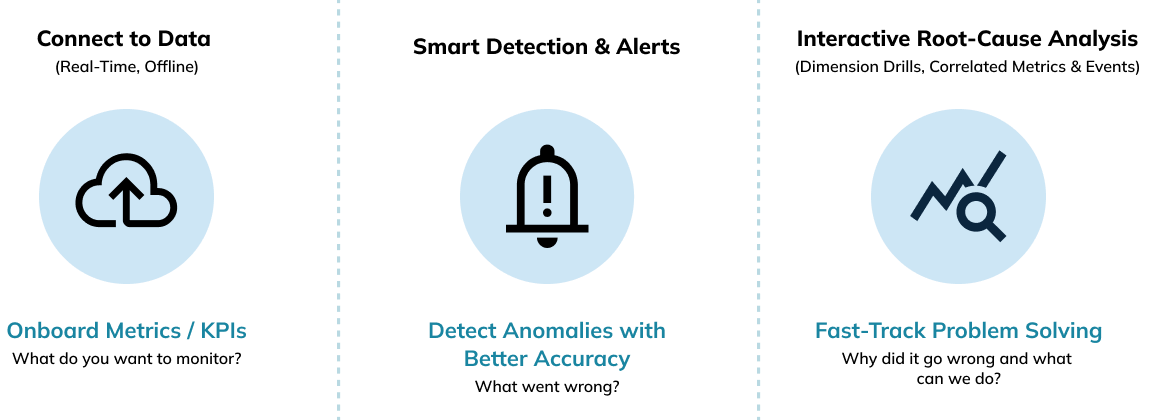
StarTree ThirdEye has unique advantages to fast-track problem-solving with applied Anomaly Detection on time-series data at scale.
Reduced Time for Detection
StarTree ThirdEye can easily connect to real-time and historical data sources at scale and detect anomalies with a point-and-click experience.
Types of Data it can Analyze
StarTree ThirdEye can analyze time-series data at scale with dimension-level granularity. It is built on top of Apache PinotTM, enabling it to run aggregated queries such as Sum/Avg/Count and simple/advanced statistical methods to detect outliers at scale in sub-second response time.
Applied Science
It runs anomaly detection models to time-series data and fine-tunes detection models with low-code/no-code experience, without needing to write code and maintain data pipelines.
Reduced Time to Resolution
An interactive UI performs root cause analysis in case of an incident and unlocks actionable insights such as top contributors and heatmap of dimensions contributing to the spike or drop in the critical metrics in an easy-to-use interface.
User Interface
It has a user-friendly interface that makes it easy to set up and use with point and-click-low code/no-code experience.
Customization and Flexibility
Users can customize the algorithms and parameters and build custom apps using APIs to solve custom business use cases.
Support and Documentation
StarTree ThirdEye comes with comprehensive documentation and support from StarTree in our community Slack.
Identifying and Preventing Fraudulent Transactions in E-Commerce
Fraudulent transactions are a major concern for e-commerce businesses, as they can result in significant financial losses and damage to a company’s reputation. Data platform teams at e-commerce companies play a crucial role in collecting, storing, and processing data to deliver meaningful insights to decision-makers, such as the payments, legal, and compliance teams. These teams rely heavily on insights related to e-commerce customer transactions to detect and prevent fraudulent activity.
However, the manual process of monitoring data can lead to delays, resulting in missed opportunities to catch fraudulent activity and take necessary actions. This ultimately leads to revenue losses and a poor customer experience.
Here is a step-by-step guide for data platform teams to automate the detection of fraudulent e-Commerce transactions and take immediate action to minimize losses to business using StarTree ThirdEye.
Step 1: Prepare and onboard e-commerce data to Apache Pinot
Download this Sample Data and upload it to Apache Pinot.
If you are a StarTree Cloud user or StarTree Free Trial user, you can use Data Manager with a point-and-click experience to ingest data.
For StarTree ThirdEye Community users or Apache Pinot OSS users, please refer to these recipes to ingest data to a local Pinot instance.
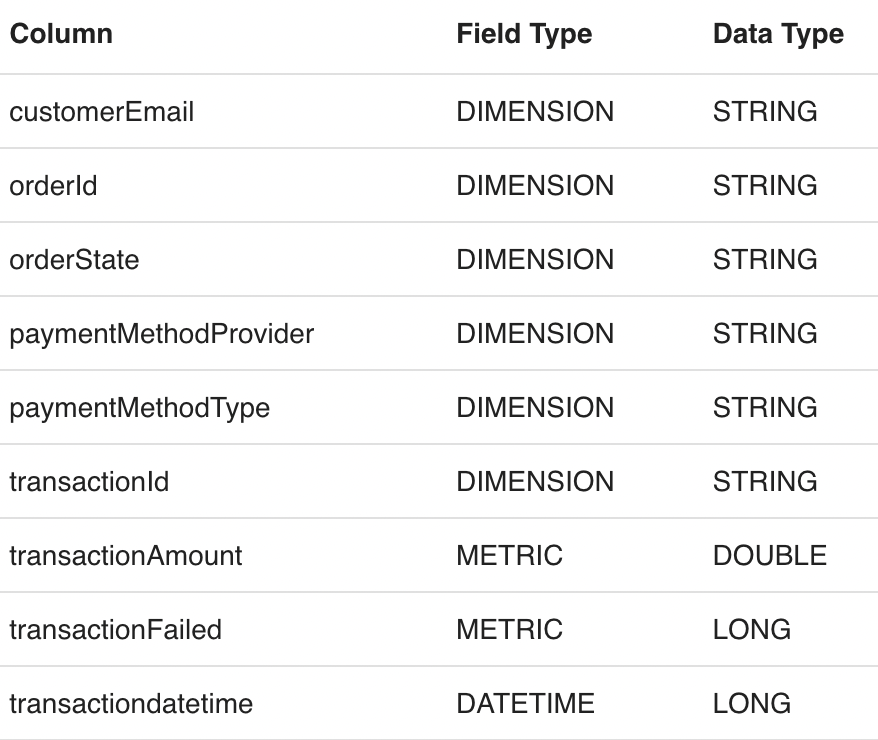
Step 2: Create and configure an alert to monitor e-commerce transactions and detect fraudulent transactions
Once the data is loaded and onboarded to StarTree ThirdEye. Login to ThirdEye and configure alerts to detect outliers using a guided onboarding flow to monitor e-commerce transactions. Here is a how-to guide.
We monitor the “average” number of transaction failures in this example. Using StarTree ThirdEye’s applied data science (out-of-box detection models), the historical data is analyzed, and the failure rate is predicted. Whenever the failure rate has a large deviation(spike) from the predicted value, it signals some fraudulent activity. Users can review the anomaly, if valid, then take corrective action.
Since the metric is “average transaction failure rate,” the “mean-variance” detection model can be applied to detect standard deviation based on historical time-series data.
StarTree ThirdEye enables users to select and apply an algorithm based on the business use case and data pattern to detect outliers in business-critical metrics.

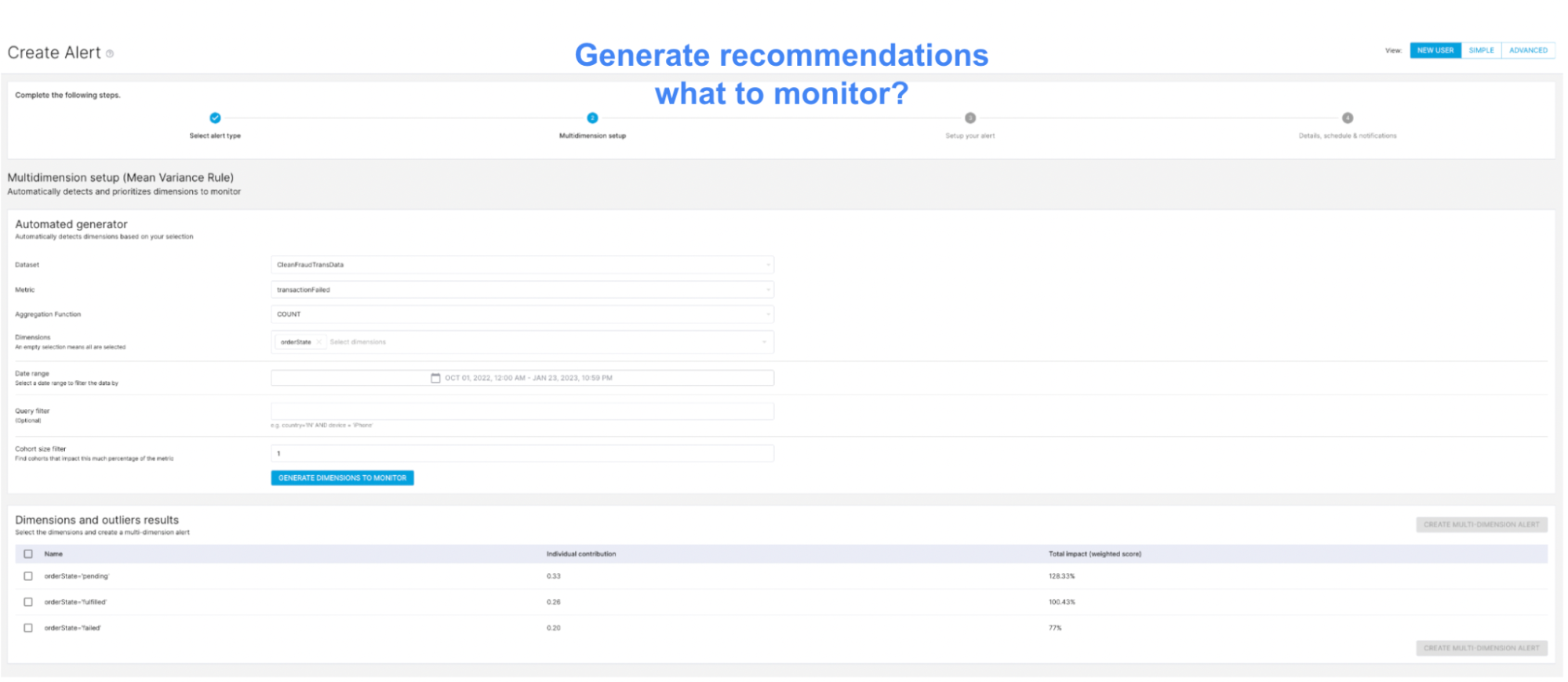
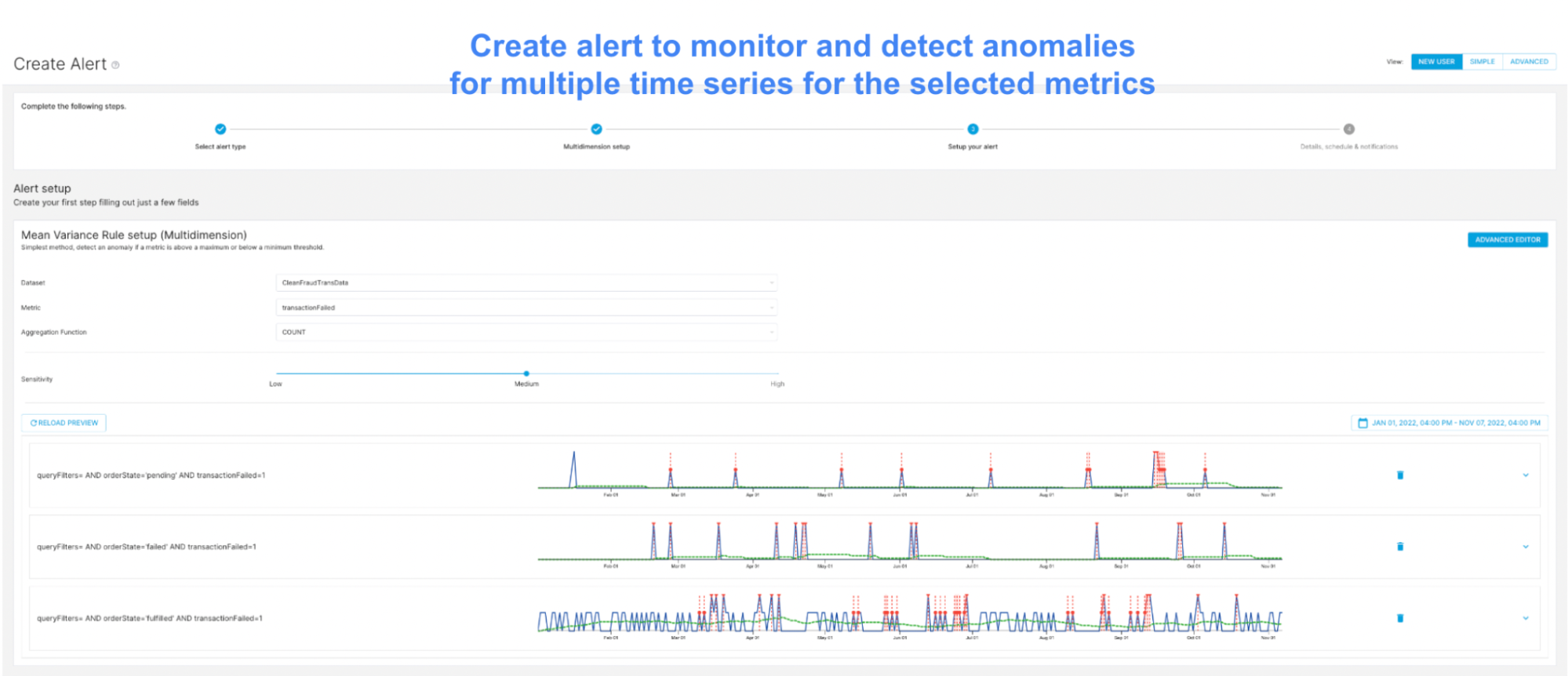
Step 3: Configure notification channels to report anomalies/outliers
Once you create an alert, you can configure the notification channels (email/slack/custom) to report the anomalies to decision-makers and analysts at a defined schedule. Here is a how-to guide.

Step 4: Investigate anomalies to identify the root cause to take corrective action
Once you create the alert and generate an anomaly, you can investigate what went wrong and why. Here is a guide on how to investigate anomalies in StarTree ThirdEye.
The interactive view of StarTree ThirdEye helps users to investigate anomalies, identify possible root-cause, and take corrective action as needed.
StarTree ThirdEye allows users to explore and analyze heatmaps to determine what contributed to the transaction’s failures so they can take corrective action.
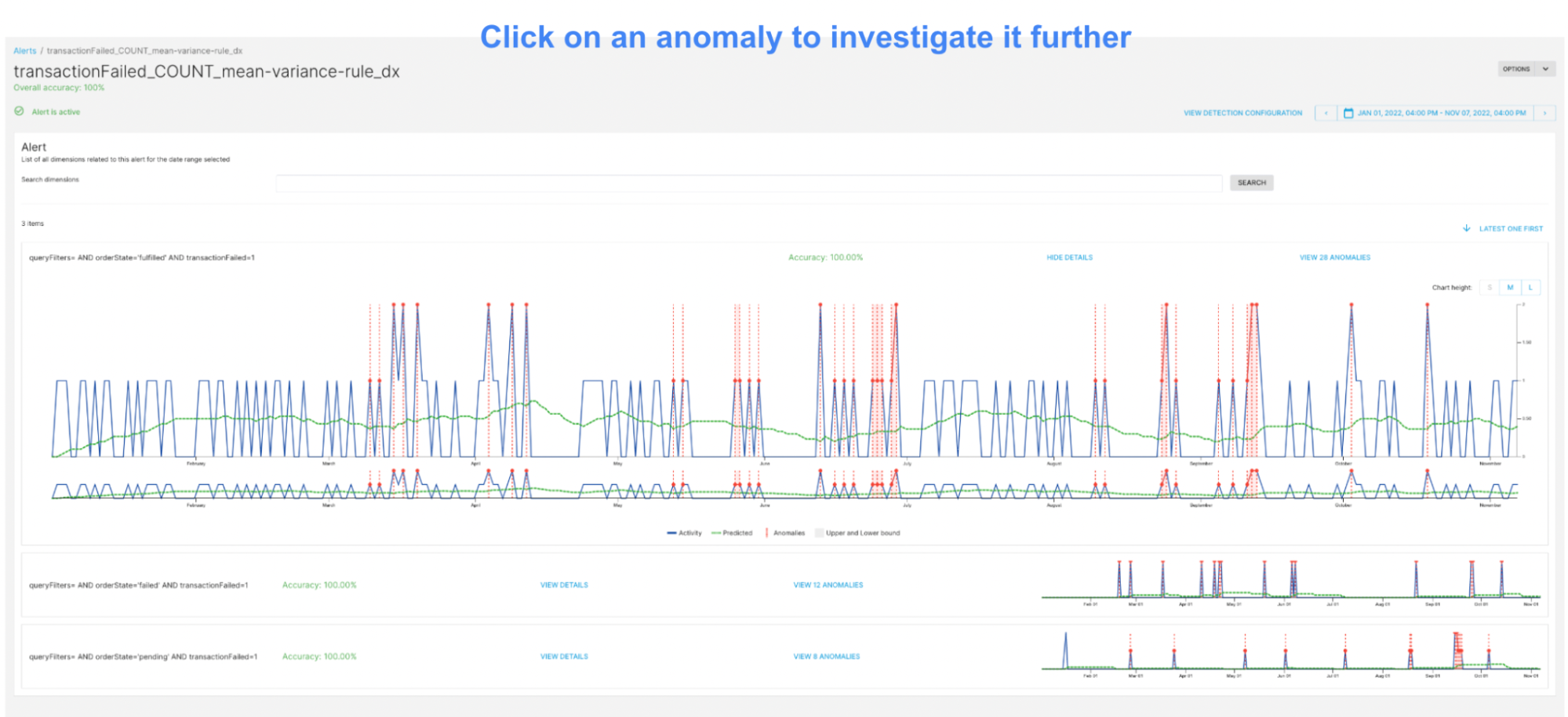
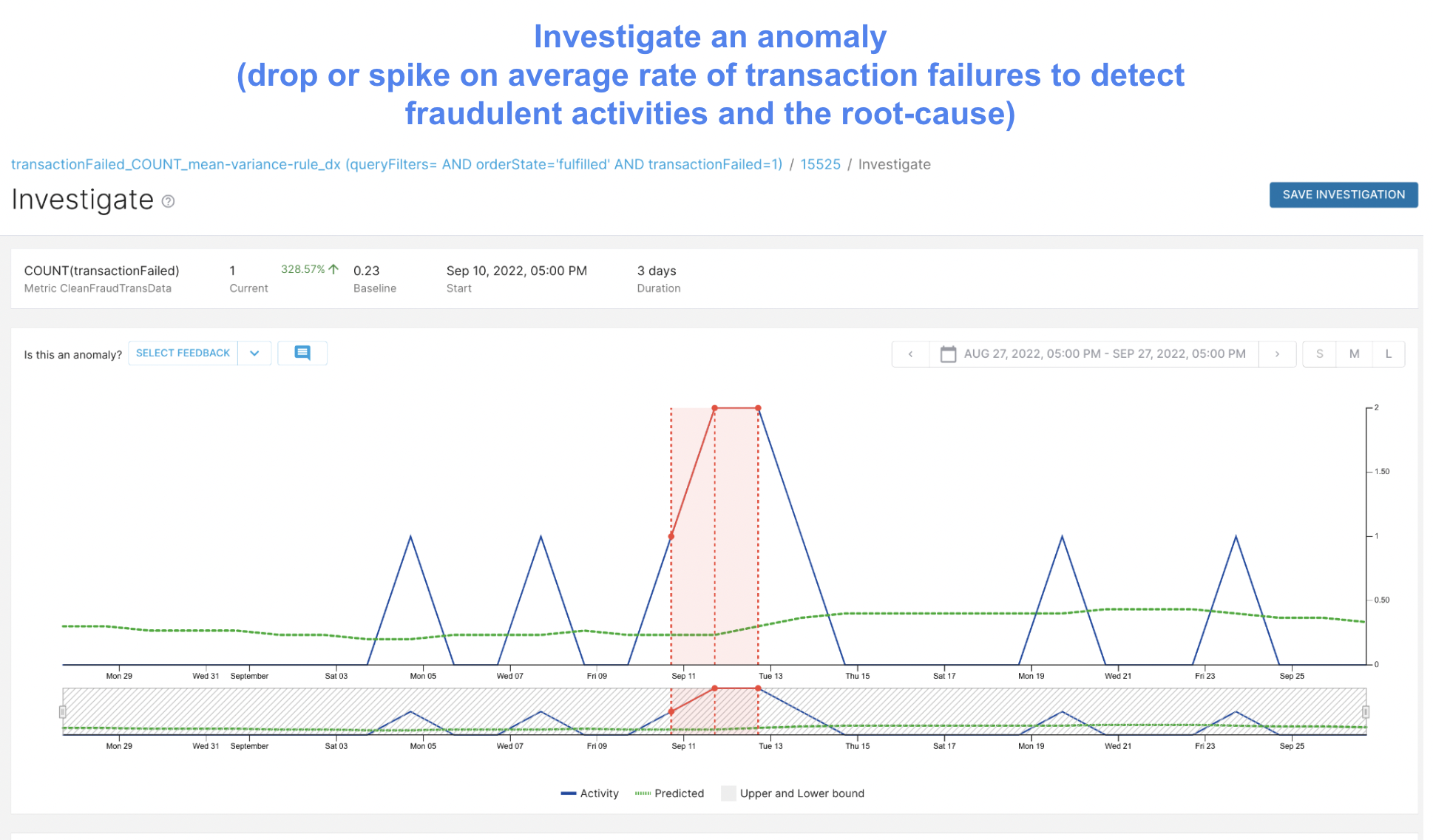
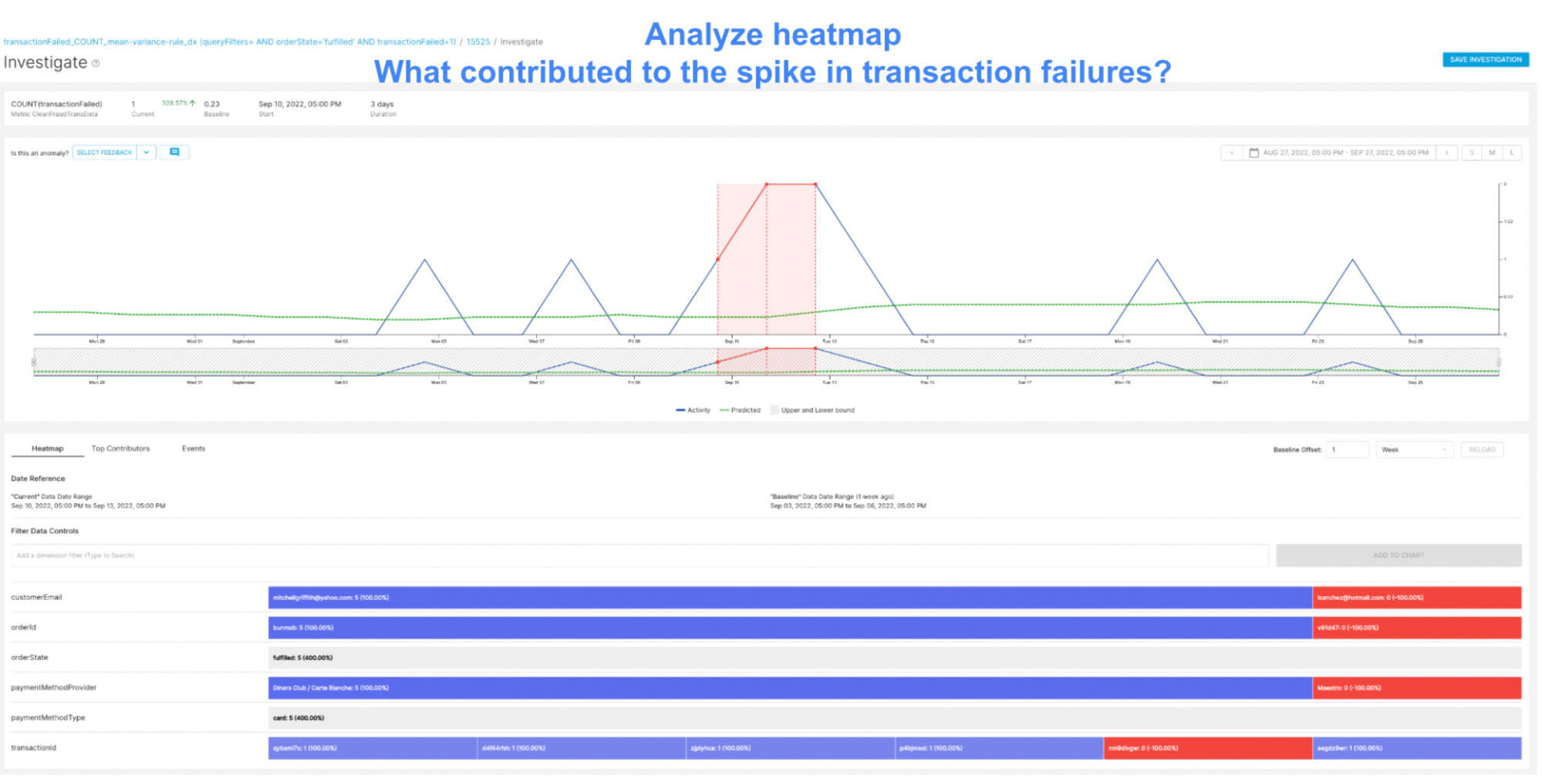
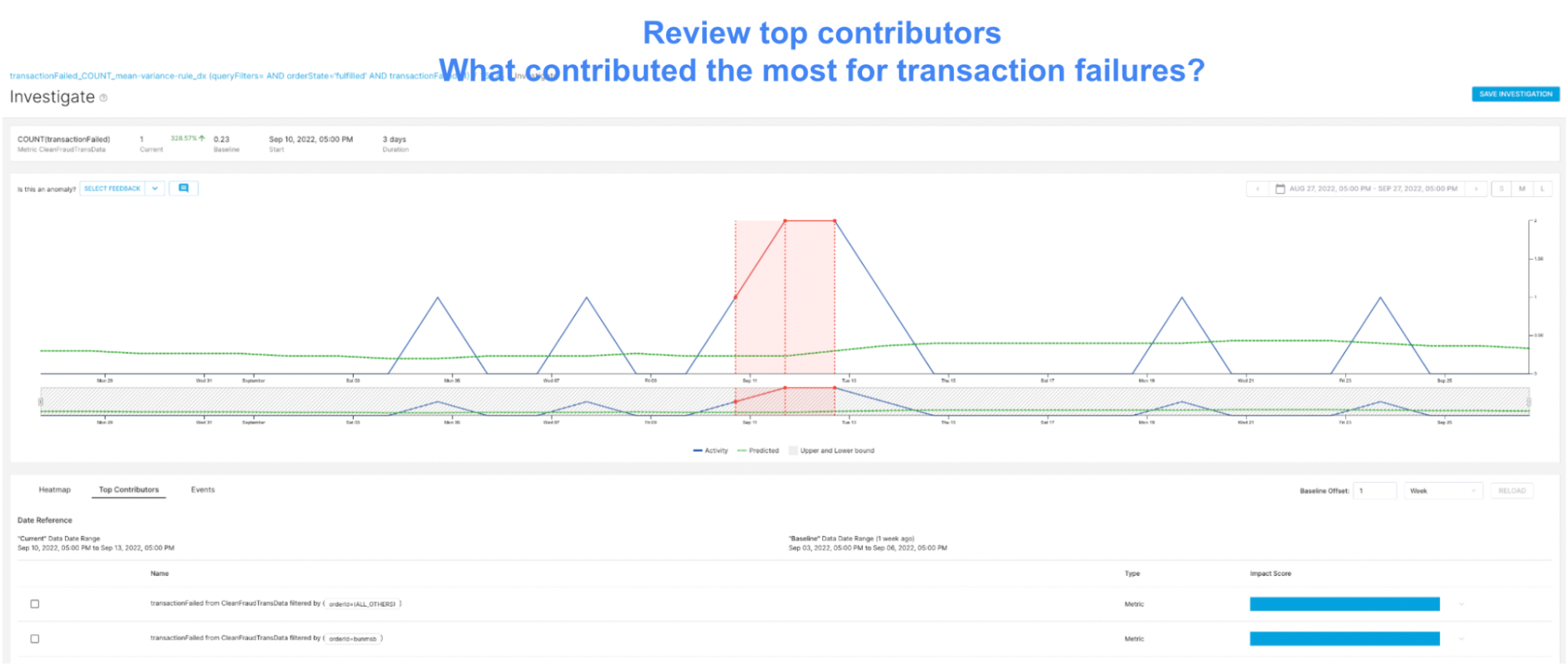
Conclusion
Hope you enjoyed reading this article for monitoring multiple time-series data related to transactions by using StarTree ThirdEye to detect fraudulent activity in an e-commerce setting.
By using StarTree ThirdEye to help identify unusual data patterns, businesses can take timely and effective action to prevent fraudulent transactions in an e-commerce setting.
If you are interested to explore and try StarTree ThirdEye, then you can:
- Request a demo
- Sign-up for StarTree Free Trial. No credit card is required to get started. Learn More.
- Join the community
- Learn more about StarTree ThirdEye
Team credits
StarTree ThirdEye team – Cyril de Catheu, Shounak Kulkarni, Steven Pham, Aakarsh Chopra, Jackson Argo.
Marketing Team – Allison Murphy.

